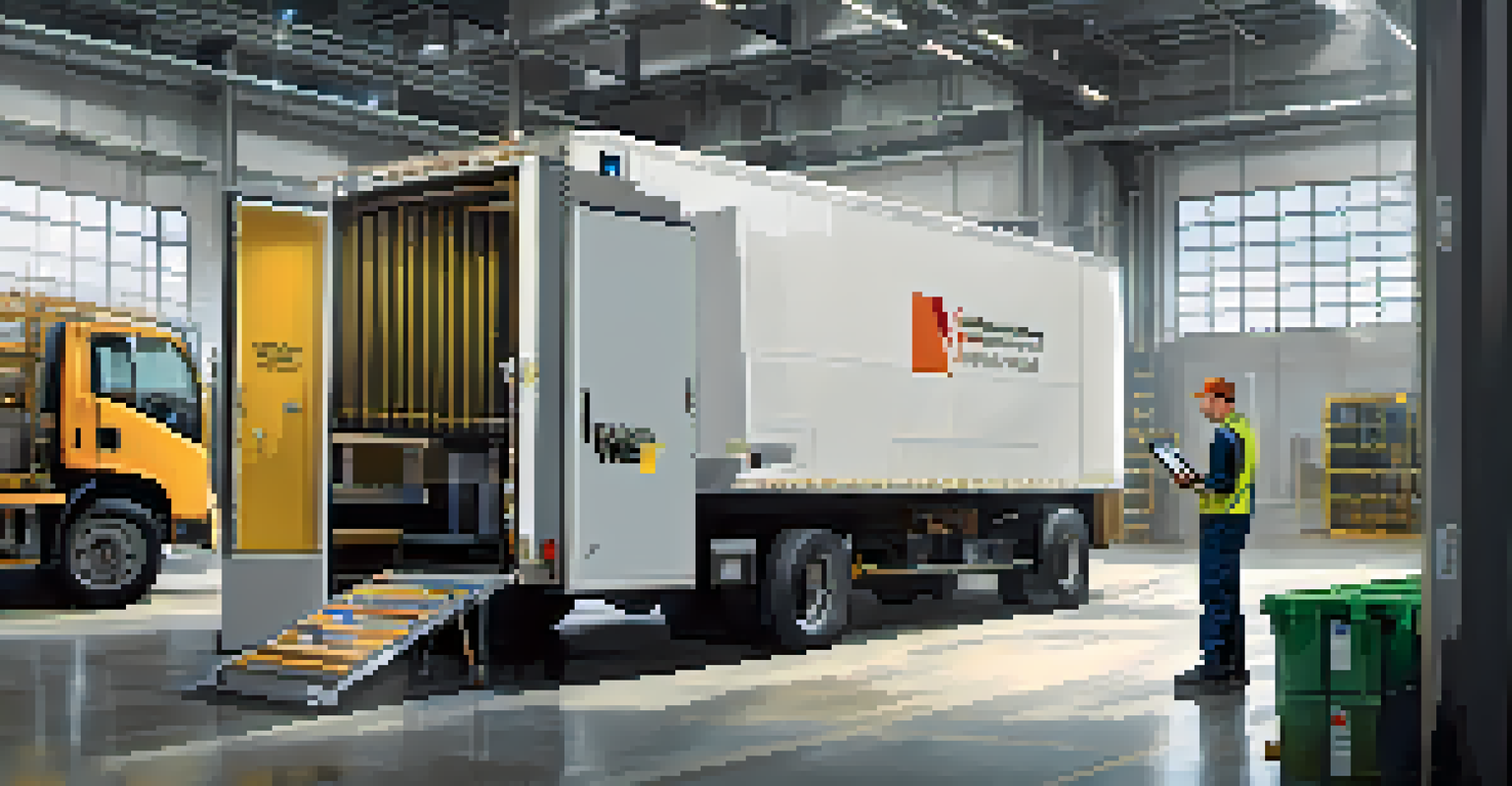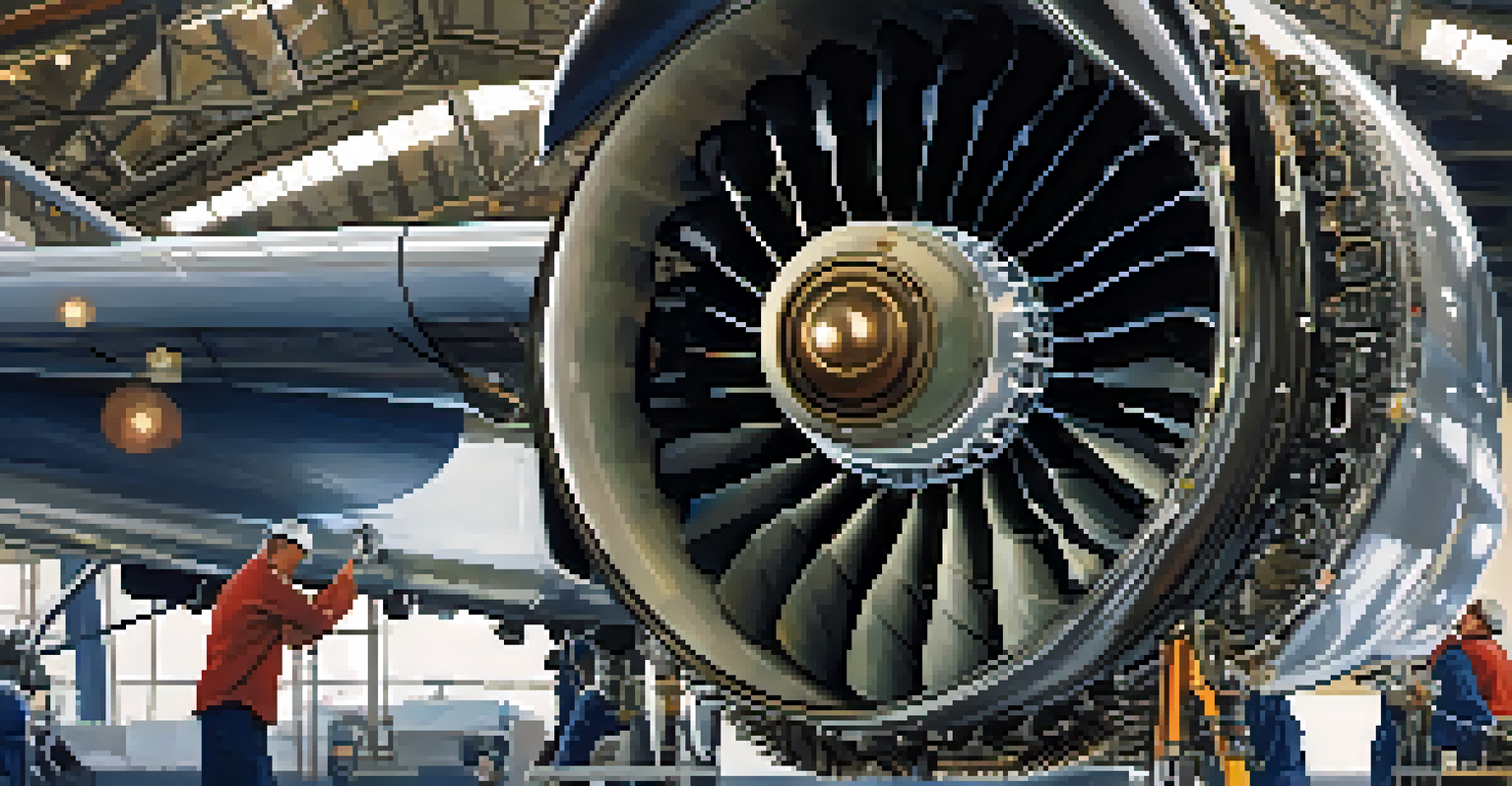The Economic Benefits of AI in Predictive Maintenance

Understanding Predictive Maintenance and AI's Role
Predictive maintenance is a proactive approach that focuses on predicting when equipment failures might occur. This strategy helps organizations save money and resources by addressing issues before they escalate. Artificial Intelligence (AI) plays a crucial role here, analyzing vast amounts of data to forecast maintenance needs accurately.
An ounce of prevention is worth a pound of cure.
By leveraging machine learning algorithms, AI can identify patterns and anomalies in equipment behavior that humans might overlook. This capability allows businesses to optimize maintenance schedules, ultimately leading to reduced downtime and increased efficiency. For instance, a manufacturing plant might use AI to predict when a machine is likely to fail based on historical data.
As a result, companies can plan maintenance during off-peak hours, minimizing disruptions to production. This not only enhances operational efficiency but also contributes to significant cost savings, making predictive maintenance a financially smart choice.
Cost Savings through Enhanced Equipment Lifespan
One of the most compelling economic benefits of AI in predictive maintenance is the extended lifespan of equipment. When businesses can anticipate issues before they arise, they can perform timely repairs and maintenance, preventing minor problems from becoming major failures. This proactive approach significantly reduces the frequency of costly replacements.

Imagine a fleet of delivery trucks; using AI to monitor their performance can help predict when a truck might need a new part or service. By addressing these needs early, companies can keep their trucks on the road longer, which translates to lower capital expenses over time.
Predictive Maintenance Saves Costs
AI-driven predictive maintenance helps organizations proactively address equipment issues, leading to significant cost savings and extended equipment lifespan.
Moreover, extending equipment life means that organizations can allocate their budget to other critical areas, such as innovation or employee training. In this way, the financial advantages of predictive maintenance ripple out, fostering a more resilient business model.
Reducing Downtime: A Key Economic Advantage
Downtime is often seen as the enemy of productivity and profitability. With AI-driven predictive maintenance, organizations can significantly minimize unexpected equipment failures that lead to costly interruptions. By predicting when machinery is likely to encounter issues, businesses can schedule maintenance at their convenience.
The best way to predict the future is to create it.
For example, a power plant using AI to monitor its turbines can plan maintenance during lower demand periods, ensuring that energy production remains stable. This strategic approach not only keeps operations running smoothly but also protects the company’s revenue stream.
The economic impact of reduced downtime extends beyond immediate savings; it also enhances customer satisfaction. When companies consistently meet delivery deadlines and service expectations, they build trust and loyalty, which is invaluable in a competitive market.
Optimizing Labor Costs with AI Insights
AI in predictive maintenance doesn't just enhance equipment performance; it also optimizes labor costs. By predicting maintenance needs accurately, organizations can allocate human resources more effectively. This means technicians are only dispatched when necessary, reducing the risk of overstaffing during slow periods.
Take, for instance, an industrial facility where technicians are assigned to perform routine checks on machinery. With AI analytics, the facility can streamline these checks, focusing manpower only where and when it’s needed. This efficient use of labor leads to substantial savings over time.
Reduced Downtime Boosts Productivity
By predicting equipment failures, businesses can schedule maintenance during off-peak hours, minimizing disruptions and enhancing overall productivity.
Additionally, AI can help identify skills gaps within the workforce. By understanding the specific maintenance needs of equipment, companies can invest in targeted training, ensuring their teams are well-equipped to handle advanced technologies.
Improving Safety and Compliance through Predictive Maintenance
Safety is paramount in any industry, and AI-driven predictive maintenance plays a vital role in enhancing workplace safety. By predicting equipment failures, organizations can prevent accidents that may result from machinery malfunctions. This proactive approach not only protects employees but also reduces liability risks for the company.
For example, in the aviation industry, predictive maintenance can forecast when critical components of an aircraft need inspection or replacement. This ensures that planes are always in top condition, safeguarding lives and maintaining compliance with stringent regulations.
The financial implications of improved safety are clear; fewer accidents lead to lower insurance premiums and reduced costs associated with workplace injuries. Ultimately, investing in predictive maintenance is not just about equipment—it's about fostering a safer and more compliant work environment.
Enhancing Decision-Making with Data-Driven Insights
AI's role in predictive maintenance goes beyond just equipment and labor; it also enhances overall decision-making. By analyzing data collected from various sources, AI provides insights that help businesses make informed choices about their operations. This data-driven approach leads to smarter investments and resource allocation.
For instance, a manufacturing firm can use AI analytics to evaluate the performance of different machines and determine which ones require upgrades or replacements. These insights allow managers to prioritize spending, ensuring that funds are directed toward areas that will yield the highest returns.
Data-Driven Insights Enhance Decisions
AI analytics provide valuable insights that empower organizations to make informed decisions about maintenance strategies, fostering innovation and growth.
Furthermore, enhanced decision-making fosters a culture of continuous improvement within organizations. As businesses harness AI to evaluate their maintenance strategies, they can adapt and evolve, driving long-term economic growth and sustainability.
Driving Innovation: AI's Impact on Maintenance Strategies
AI is not only a tool for predictive maintenance; it also drives innovation within maintenance strategies. As organizations adopt AI technologies, they uncover new ways to streamline operations and enhance performance. This continuous evolution keeps businesses competitive in an ever-changing market.
For example, companies may discover new predictive models that further refine their maintenance schedules or even implement automation in routine tasks. This empowers teams to focus on more complex issues that require human intervention, thus improving overall productivity.

Moreover, as industries embrace AI, they foster a culture of innovation that encourages experimentation and adaptation. This mindset not only enhances maintenance strategies but can also lead to breakthroughs in product development and service delivery, ultimately benefiting the bottom line.
Conclusion: The Future of AI in Predictive Maintenance
As we look to the future, the role of AI in predictive maintenance is set to expand even further. With ongoing advancements in technology, businesses can expect even more precise predictions and enhanced analytical capabilities. This evolution promises to unlock new levels of efficiency and cost savings across various industries.
Moreover, as more organizations adopt AI-driven predictive maintenance, we will likely see a shift in industry standards and practices. Companies that embrace this change will position themselves as leaders, reaping the economic rewards of proactive maintenance strategies.
In conclusion, the economic benefits of AI in predictive maintenance are clear. By investing in these technologies, businesses not only safeguard their assets but also pave the way for sustainable growth and innovation in an increasingly competitive landscape.